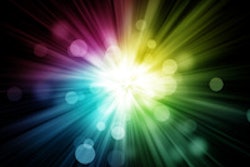
Color images are technically difficult to deal with, creating a thorny issue that's growing as PACS broadens from radiology and cardiology to include other specialties that use color-heavy images. A diverse group of researchers, vendors, and users gathered recently to discuss challenges and potential solutions.
Sponsored by the International Color Consortium (ICC) and hosted May 8 and 9 by the U.S. Food and Drug Administration (FDA) at its new campus in White Oak, MD, the Summit on Color in Medical Imaging sought to address the basic questions of whether or not color consistency matters and, if so, how it can be achieved.
 Dr. David Clunie.
Dr. David Clunie.
Surprisingly, perhaps, no general consensus was reached on the importance of color to diagnosis. No specific evidence was presented that diagnostic performance is negatively affected by inconsistency of color representation, but it was generally agreed that risk could be lowered and user acceptance and efficiency improved.
A diverse group attended the meeting, including color and perceptual scientists, medical physicists, regulators, standards writers, engineers, vendors, and medical professionals involved in a range of specialties, including pathology, endoscopy, laparoscopy, dermatology, ophthalmology, dentistry, medical photography, and telemedicine. Many of these specialties are increasingly applying digital imaging technology, and most of these applications involve color.
A poster child
Whole-slide imaging (WSI) was a poster child at the meeting for the problems in color imaging. Many factors were described in traditional histopathology as influencing the appearance seen by the pathologist when viewing a slide with an optical microscope, ranging from how quickly the specimen is processed after harvesting to what protocols and materials are used for staining, the type of microscope and how well it is cleaned and maintained, and any limitations of the pathologist's color vision.
Pathologists differ on a preferred staining protocol or a preferred appearance, and they express discomfort when interpreting outside slides as a consequence. Little wonder, then, that the process is complicated by incorporating digital devices, which have limited ability to detect or render the range of color supported by the human visual system.
On the other hand, digital devices create an opportunity for computer-assisted analysis of the information. However, machine algorithms at their current state of development may be more susceptible to color inconsistency than human observers. Various presenters illustrated the range of problems encountered and presented various solutions, including the use of reference slides for calibration, and color normalization algorithms to achieve similarity of appearance despite differences in staining or acquisition.
Dermatology
Though involving different technology, dermatology (both of rashes and pigmented skin lesions) was described as presenting similar challenges. As in other forms of medical photography, devices used in practice span a range of fidelity and quality, from professional equipment in the hands of experts used in carefully controlled lighting conditions with a color reference target in the field-of-view to a medical staff's personal mobile phone with its built-in camera. In the future, many more images may be acquired in the latter informal manner than the former, setting practical limits on the consistency attainable.
Mobile devices were discussed, both in terms of acquisition and display, and attention was drawn to the device's proprietary processing, which may lead to unpredictable results. The capture of raw data from more sophisticated cameras and detectors was suggested as a means of both better controlling the process as well as providing insight into the color characteristics of the devices, but it was generally agreed to be impractical in most clinical scenarios. Color normalization was again discussed, this time in the context of retinal fundoscopy, which, like WSI, is affected by differences in acquisition device characteristics and user preferences.
A clear distinction was drawn between the use of stored color images for diagnostic purposes (such as for virtual microscopy, teledermatology, or teleophthalmology), compared with the storage of images for the medical record, research, or training. In some scenarios, the medical decision is contemporaneous with the display of real-time images (for example, during endoscopy or laparoscopic surgery). Then, color consistency is important only from the perspective of reproducing what was visible on the user's display during acquisition, since there is never any possible direct visualization of the original scene by the human observer.
Though multispectral imaging was generally outside the scope of the meeting, the role of acquiring more than three channels of information to contribute to higher-fidelity color reproduction was presented, suggesting interesting challenges and opportunities for display and analysis.
Display matters
Moving on from the requirements of the various medical applications, the scientific and engineering aspects of the reproduction of color on soft-copy displays were addressed on the second day. Descriptions of display technology were accompanied by discussion of practical issues of color error in the display process, how to measure and describe it, and what had been observed with various displays.
Again, the importance of mobile devices was apparent. Attendees were reminded of the importance of focusing on the perception of color and the user's ability to discern differences, rather than matters of absolute colorimetric accuracy, as well as the variation in gamut (range of colors that can be reproduced) of different input and output devices.
The final session was devoted to the matter of standards, and not just medical informatics standards such as DICOM and Integrating the Healthcare Enterprise (IHE) that are familiar to PACS professionals. The standards that form the basis of colorimetry from the International Commission on Illumination (CIE) were discussed in the context of those from the ICC, particularly with reference to ICC profiles, which form the basis for color management in the prepress and digital photography industries.
The ICC approach has been incorporated in DICOM since 2005, and so it was important to hear a discussion of its level of adoption, strengths, weakness, limitations, and future directions. Yours truly provided an overview of the support for color imaging in DICOM and IHE, emphasizing the widespread and increasing use of DICOM for encoding color medical images, but the complete lack of support for color consistency using ICC profiles in DICOM by acquisition devices or PACS.
Finally, the standards for medical color display performance and characterization being developed by the American Association of Physicists in Medicine (AAPM) and the International Electrotechnical Commission (IEC) were presented. Earlier in the summit, standards for the performance and composition of stains used in histopathology had been discussed, as had been the lack of standards or guidelines, or their adoption, in the specimen preparation process. Earlier presenters had also mentioned standards for telemedicine and, in particular, teledermatology.
Moving forward
Summing up, there appeared to be sufficient interest and commonality among the diverse groups represented to justify moving forward with further efforts to improve consistency. There was no doubt that the medical community has not yet taken advantage of the standards available from other industries; hence, renewed engagement of the ICC with DICOM, IHE, AAPM, and IEC working groups is planned.
It's hoped that color scientists, medical users, and equipment vendors can take advantage of such forums to advance the state of the art. To that end, the following day saw meetings of the DICOM Visible Light working group, primarily focused on the issues of endoscopy color images, as well as the joint IEC TC62B/MT51 and AAPM TG196 "Requirements and methods for color displays in medicine" group.
All that said, from the perspective of conventional PACS as currently deployed, color images remain to some extent "second-class citizens." Though not every desktop, workstation, or mobile device may need formal color calibration to be diagnostically useful, there may be an unrealized opportunity for the innovative PACS vendor to satisfy the need of some users to make images that are captured from diverse sources appear more consistent.
Though I am a member of the organizing committee for the summit, the foregoing consists of my personal opinions and observations. A formal report from the committee and participants will be forthcoming. For further information, the program and archived webcast are available here and the abstracts and speaker information can be found here.
Dr. David Clunie is a radiologist, medical informaticist, DICOM open-source software author, editor of the DICOM standard, and co-chair of the IHE Radiology Technical Committee. He is the proprietor of PixelMed Publishing, which publishes educational material about DICOM and related subjects, in addition to developing open-source and custom software and providing consulting and training in the field.



















